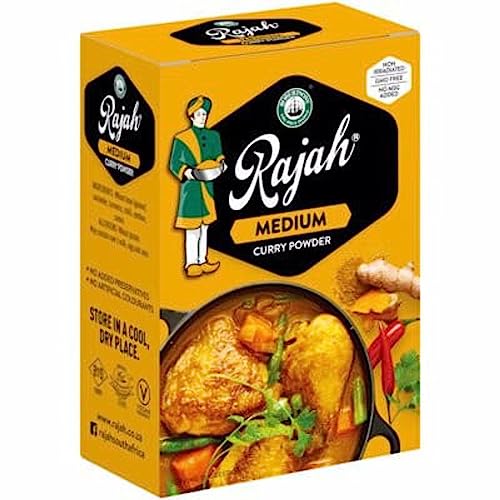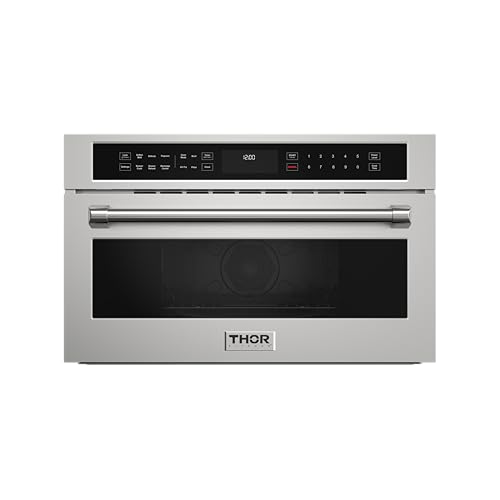10 Best Balsamic Vinegar Brands, Top Picks
Looking for the perfect balsamic vinegar to elevate your dishes? In this guide, we delve into the best balsamic vinegar brands that stand out for their quality, flavor, and versatility. Discover which ones truly deserve a place in your kitchen and why they’re a cut above the rest.
Compare Products
- KR Score9.4
Kitchensradar.com established a ranking system called KR Score. KR Score is unaffected or unrelated to any websites run by manufacturers or sales agents. Learn more
- Brand365 by Whole Foods Market
- KR Score9.4
Kitchensradar.com established a ranking system called KR Score. KR Score is unaffected or unrelated to any websites run by manufacturers or sales agents. Learn more
- BrandPompeian
- KR Score9.4
Kitchensradar.com established a ranking system called KR Score. KR Score is unaffected or unrelated to any websites run by manufacturers or sales agents. Learn more
- BrandCOLAVITA
- KR Score9.4
Kitchensradar.com established a ranking system called KR Score. KR Score is unaffected or unrelated to any websites run by manufacturers or sales agents. Learn more
- BrandGiusti
- KR Score9.4
Kitchensradar.com established a ranking system called KR Score. KR Score is unaffected or unrelated to any websites run by manufacturers or sales agents. Learn more
- BrandRoland Foods
- KR Score9.4
Kitchensradar.com established a ranking system called KR Score. KR Score is unaffected or unrelated to any websites run by manufacturers or sales agents. Learn more
- BrandDue Vittorie
- KR Score9.4
Kitchensradar.com established a ranking system called KR Score. KR Score is unaffected or unrelated to any websites run by manufacturers or sales agents. Learn more
- BrandCOLAVITA
- KR Score9.2
Kitchensradar.com established a ranking system called KR Score. KR Score is unaffected or unrelated to any websites run by manufacturers or sales agents. Learn more
- BrandCOLAVITA
- KR Score9.2
Kitchensradar.com established a ranking system called KR Score. KR Score is unaffected or unrelated to any websites run by manufacturers or sales agents. Learn more
- BrandBlazing Bella
- KR Score9.2
Kitchensradar.com established a ranking system called KR Score. KR Score is unaffected or unrelated to any websites run by manufacturers or sales agents. Learn more
- BrandCOLAVITA
Last update on 2025-07-31 / Affiliate links / Images, Product Titles, and Product Highlights from Amazon Product Advertising API
Before selecting a bottle of balsamic vinegar, it’s important to understand the key qualities that distinguish high-grade options from the rest. Not all balsamic vinegars are created equal—some are intended for everyday cooking, while others are meant for finishing dishes or savoring on their own. Here's what to look for when evaluating your choices.
1. Origin and Label Designations
Authentic balsamic vinegar traditionally comes from Modena or Reggio Emilia in northern Italy. Look for DOP (Denominazione di Origine Protetta) or IGP (Indicazione Geografica Protetta) labels, which certify the product’s regional origin and adherence to traditional methods.
-
DOP vinegars are aged for a minimum of 12 years and crafted exclusively from cooked grape must.
-
IGP products may contain wine vinegar and be aged for a shorter period but still follow regulated practices.
2. Ingredients
Always check the ingredient list. The highest-quality balsamic vinegar will list only cooked grape must—with no added sugars, thickeners, or artificial coloring. Commercial-grade options often include wine vinegar, caramel coloring, or preservatives, which may affect flavor and purity.
3. Aging Time
Aging is a critical factor. The longer a balsamic vinegar is aged, the more concentrated and complex its flavor becomes.
-
Young vinegars (under 3 years): Thin, sharp, and best for marinades or cooking.
-
Mid-aged (5–10 years): Balanced, slightly thicker, and suitable for drizzling.
-
Aged (12+ years): Viscous, rich, and best used sparingly as a finishing touch.
Some brands may use terms like “aged” or “reserve,” but unless they carry a DOP certification, these labels are not standardized.
4. Texture and Consistency
High-quality balsamic vinegar should have a slightly syrupy consistency due to natural reduction over time—not from added thickeners. If it’s overly watery or sticky, it may indicate lower quality or artificial additives.
5. Flavor Profile
Good balsamic vinegar strikes a delicate balance between sweetness and acidity. Notes of dried fruit, molasses, or even wood may be present in traditionally aged varieties. Taste should be layered and smooth, without a harsh bite or artificial aftertaste.
6. Intended Use
Consider how you plan to use it:
-
For everyday cooking: A well-made IGP vinegar is affordable and versatile.
-
For finishing dishes or serving with cheese or fruit: Choose an aged or DOP-certified option.
-
For making vinaigrettes: A balanced, mid-range vinegar works well when paired with good olive oil.
7. Price vs. Quality
Price can vary significantly—from $5 to over $150 per bottle. While cost isn’t the only indicator of quality, it often reflects the aging process and production method. If you’re buying a very cheap bottle, it’s likely mass-produced and less nuanced in flavor.
Determining the quality of balsamic vinegar involves a few key factors:
-
Ingredients: High-quality balsamic vinegar should contain just two ingredients: grape must (freshly crushed grape juice) and wine vinegar. The absence of artificial flavors or additives is a good indicator of quality.
-
Aging: Traditional balsamic vinegar is aged for a significant period, often between 12 to 25 years or more. The aging process imparts complex flavors and a rich, nuanced profile. Check the label for aging information, as longer aging usually means higher quality.
-
Consistency: High-quality balsamic vinegar has a thick, syrupy consistency. If it is too watery, it may be less aged or diluted. This viscosity indicates the concentration of flavors developed during the aging process.
-
Taste: Premium balsamic vinegar should have a balanced blend of sweetness and acidity, with complex flavors including notes of fruit, oak, and spices. If it tastes overly sour or sharp, it might not be of the highest quality.
-
Label and Certification: Look for certifications such as DOP (Denominazione di Origine Protetta) for traditional balsamic vinegars. This certification ensures that the vinegar is produced in the Modena or Reggio Emilia regions of Italy and follows strict production standards.
Which Is a Good Balsamic Vinegar?
A good balsamic vinegar is one that meets the criteria for quality discussed above and fits your culinary needs. Here are a few highly-regarded options:
-
Aceto Balsamico Tradizionale di Modena DOP: This is a traditional balsamic vinegar aged for at least 12 years. Brands like Giuseppe Giusti and Acetaia Malpighi are well-known for their exceptional quality.
-
Aceto Balsamico di Modena IGP: For a more affordable option with good quality, look for IGP (Indicazione Geografica Protetta) labels. Brands such as Colavita and Monari Federzoni offer good options that balance quality and cost.
What Balsamic Vinegar Do Chefs Use?
Professional chefs often choose balsamic vinegars based on their flavor profile and intended use:
-
Traditional Balsamic Vinegar (Aceto Balsamico Tradizionale di Modena DOP): Renowned chefs favor this type for its rich, complex flavors and thick consistency. It's used sparingly as a finishing touch on dishes.
-
Aged Balsamic Vinegar: For versatility and affordability, chefs might use well-aged, but not DOP-certified, balsamic vinegars. These provide depth of flavor and can be used in cooking or as a salad dressing. Brands like La Vecchia Dispensa and Villa Manodori are popular among culinary professionals.
What Is the Best Selling Balsamic Vinegar in Italy?
In Italy, the best-selling balsamic vinegars often include:
-
Aceto Balsamico di Modena IGP: This category includes brands like Ferrari and Ponti, which are widely available and popular for their balanced flavor and value.
-
Giuseppe Giusti: Known for its premium quality and traditional production methods, Giusti balsamic vinegars are also among the best sellers.
What Balsamic Vinegar Do Italians Use?
Italians use a range of balsamic vinegars depending on the dish and occasion:
-
Aceto Balsamico di Modena IGP: Commonly used for everyday cooking and dressings. It’s affordable and versatile, making it a staple in Italian households.
-
Aceto Balsamico Tradizionale di Modena DOP: Reserved for special occasions or high-end dishes. Its complex flavor profile is highly valued for enhancing fine dining experiences.
Understanding these factors can help you choose the best balsamic vinegar for your culinary needs, whether you're cooking at home or looking to impress guests with a touch of Italian elegance.
Related Posts:
The 10 Best Chocolate For Truffles, According to Experts
The 10 Best Nut Butter Brands of 2026, According to Experts
10 Best Indian Curry Powder of 2026, Tested by Experts




























